1.Raw Material Preparation
Raw material preparation is the first and most critical step in magnet production. High-purity metals and alloys, such as neodymium, iron, boron, or aluminum, nickel, and cobalt, are carefully selected to ensure consistent quality. These materials are weighed and proportioned according to precise formulas, then melted or blended to create the desired magnetic composition. Proper preparation guarantees the stability of the final magnet’s properties, including strength, durability, and resistance to environmental factors. Any impurity or incorrect ratio at this stage can affect the magnet’s performance in later applications.

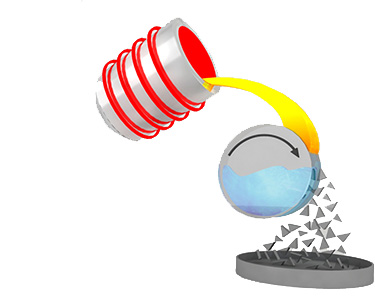
2.Melting
Melting is a vital stage in magnet production where carefully measured raw materials, such as rare earth metals, iron, and other alloying elements, are heated in a vacuum or inert atmosphere furnace. This process ensures that the materials are fully combined into a homogeneous alloy while minimizing oxidation and impurities. The controlled melting environment is critical for achieving the desired chemical composition, which directly impacts the magnetic strength, temperature stability, and durability of the final magnets.
3.Hydrogen Decrepitation
Hydrogen decrepitation is a specialized process used to break down cast alloy ingots into coarse powders for magnet production. During this step, the alloy absorbs hydrogen gas, which penetrates the material and causes it to expand and crack along grain boundaries. This controlled fragmentation makes the material easier to mill into fine powders, ensuring uniform particle size and reducing mechanical stress compared to conventional crushing. By improving efficiency and preserving the alloy’s magnetic properties, hydrogen decrepitation plays a crucial role in preparing high-quality raw powders for the subsequent milling and pressing stages.
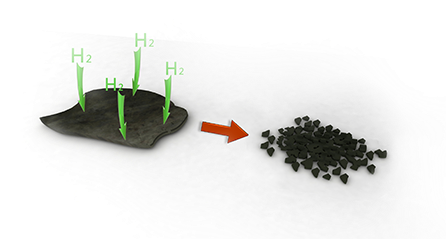
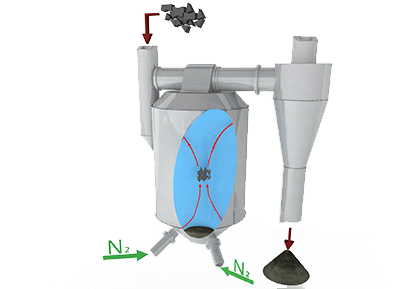
4.Jet Milling
Jet milling is a critical step in magnet production where coarse powders obtained from hydrogen decrepitation are further refined into ultrafine particles. Using high-pressure streams of compressed gas, the powder particles collide with each other, breaking down to sub-micron sizes without introducing impurities from grinding media. This method ensures precise control over particle size distribution, which is essential for achieving uniform density, strong magnetic alignment, and optimal sintering performance. The fine powders produced by jet milling form the foundation for high-performance magnets with consistent strength and stability.
5.Pressing
Pressing is the stage where fine magnetic powders are compacted into a desired shape under high pressure. Depending on the product requirements, pressing can be performed using axial, transverse, or isostatic methods. During this process, an external magnetic field may also be applied to align the powder particles, ensuring the final magnet achieves maximum magnetic orientation and performance. Proper pressing not only determines the shape and density of the green compact but also lays the foundation for the magnet’s strength, stability, and efficiency in later sintering and machining stages.
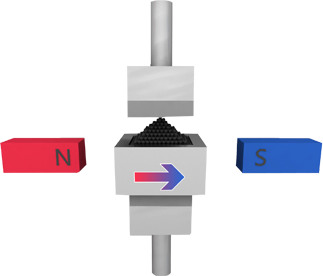

6.Sintering
Sintering is a key stage in magnet production where the pressed “green” compacts are heated to high temperatures in a controlled atmosphere. During this process, the powder particles bond together through diffusion, increasing density and mechanical strength while preserving the desired magnetic alignment. Proper sintering enhances the magnet’s coercivity, remanence, and overall performance. Temperature and time must be precisely controlled, as deviations can lead to grain growth, reduced magnetic properties, or structural defects. The result is a solid magnet blank with stable magnetic characteristics, ready for further machining and finishing.
7.Machining
Machining is the process of shaping sintered magnets into precise dimensions and tolerances required for their final application. Due to the hardness and brittleness of magnets, specialized cutting tools, such as diamond-coated or resin-bonded grinding wheels, are used to prevent chipping or cracking. This step ensures accurate size, surface finish, and geometric consistency, which are essential for assembly in motors, sensors, electronics, and other devices. Proper machining maintains the magnet’s structural integrity and magnetic properties while preparing it for coating or other post-processing treatments.

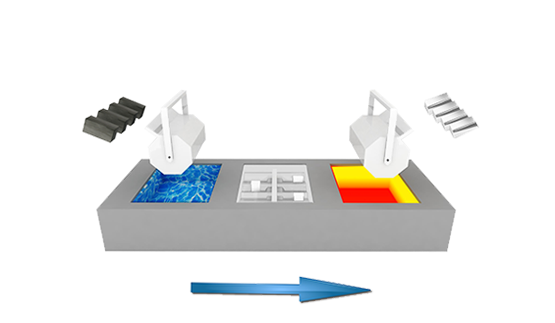
8.Surface Treatment
Surface treatment is the final stage in magnet production that protects magnets from corrosion, wear, and mechanical damage. Common treatments include nickel plating, zinc coating, epoxy resin, or other protective layers. These coatings not only extend the magnet’s lifespan but also enhance appearance and improve compatibility with different assembly environments. Proper surface treatment ensures that the magnet maintains its magnetic strength and structural integrity, even under harsh conditions such as humidity, chemicals, or high temperatures.
9.Magnetizing
Magnetizing is the final step in magnet production where the finished magnets are exposed to a strong external magnetic field to align their magnetic domains. This process imparts the permanent magnetic properties, determining the magnet’s strength, polarity, and performance. Depending on the application, magnetizing can be done in one or multiple directions, and the field strength must be carefully controlled to achieve optimal results. Proper magnetization ensures that the magnet delivers consistent, reliable performance in devices such as motors, sensors, electronics, and industrial equipment.
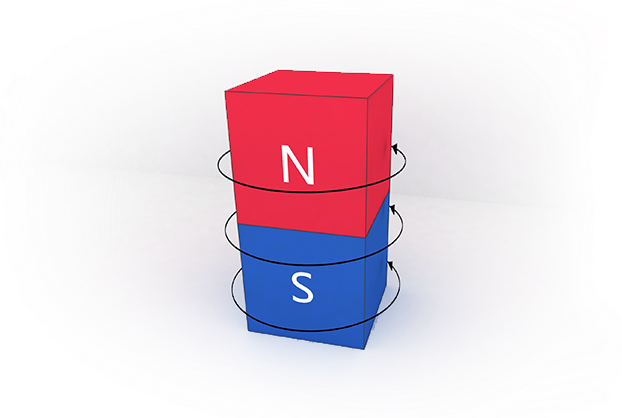
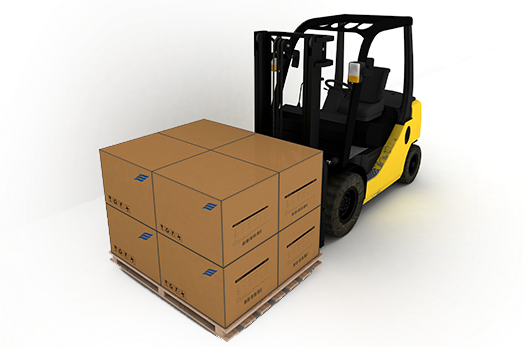
10.Delivery
Delivery is the final stage in the magnet production process, where finished magnets are carefully packaged and shipped to customers. Proper packaging is essential to prevent physical damage, demagnetization, or corrosion during transportation. Depending on the magnet type, size, and application, protective materials such as foam inserts, anti-static films, or moisture-resistant coatings may be used. Efficient and secure delivery ensures that magnets reach clients in optimal condition, ready for integration into electronic devices, motors, sensors, or other industrial application
